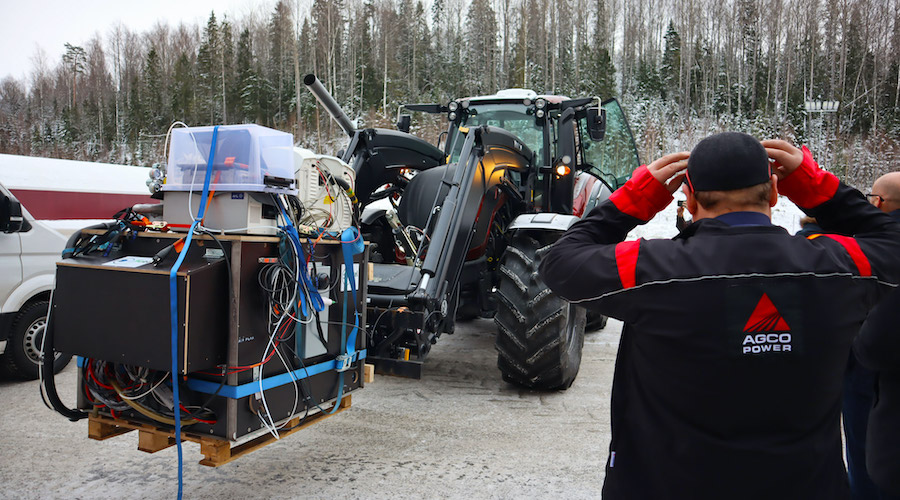Green hydrogen, CO2 used to produce e-fuel for hard-to-electrify vehicles

An electro-fuel aimed at vehicles that are difficult to electrify has been produced from green hydrogen and carbon dioxide.
Earlier this month, the paraffinic e-fuel was tested for the first time on a diesel-powered tractor at AGCO Power’s Linnavuori factory located in Nokia, southwestern Finland.
The E-fuel Project, led by experts at the VTT Technical Research Centre of Finland, has combined high-temperature electrolysis, carbon capture and Fischer-Tropsch hydrocarbon synthesis to develop electro-fuel production for commercial and industrial scale.
“Using Finnish technology, we have succeeded in producing e-diesel, or electro-fuel, from green hydrogen and carbon dioxide on a pre-commercial scale. The fuel can be used to replace fossil diesel in sectors that are difficult to electrify, such as heavy road transport and shipping. It can also be used in machinery. Our next step is to obtain information on the usability of the fuel in a field test,” VTT professor Juha Lehtonen said in a media statement.
Lehtonen pointed out that the project has produced hundreds of kilograms of synthetic hydrocarbons for sustainable transport fuel. The hydrocarbons have then been refined into a drop-in paraffinic diesel at a facility owned by oil refining company Neste. The resulting product was later on tested at AGCO Power’s Linnavuori plant.
“The Valtra T235D tractor, powered by AGCO Power’s 74 LFTN diesel engine, was fuelled with the new e-diesel and, during the test drive, which lasted several hours, fuel consumption and the carbon dioxide, nitrogen oxides, fine particles and other substances in the exhaust emissions were measured. The e-diesel produced in the project is expected to be of high quality and meet current road diesel fuel standards,” AGCO Power’s director of engineering, Kari Aaltonen, said. “We are developing solutions for different types of machinery to meet the needs of farmers, for example with electric batteries, hydrogen, methane and methanol.”
The executive noted that sustainable fuels suitable for the current diesel engine fleet, such as drop-in e-diesel, can be blended with fossil diesel completely freely and still meet the quality requirements of paraffinic diesel prescribed by the British EN 15940 standard.
According to Päivi Aakko-Saksa, principal research scientist at VTT, based on previous experience with paraffinic fuels, the e-diesel being tested is also expected to be an environmentally friendly alternative to fossil diesel in terms of local emissions.
“By analyzing the results of the Nokia test run, we will see whether e-diesel is also an environmentally friendly alternative with regard to harmful exhaust emissions,” the expert said.
More News
{{ commodity.name }}
{{ post.title }}
{{ post.date }}


Comments